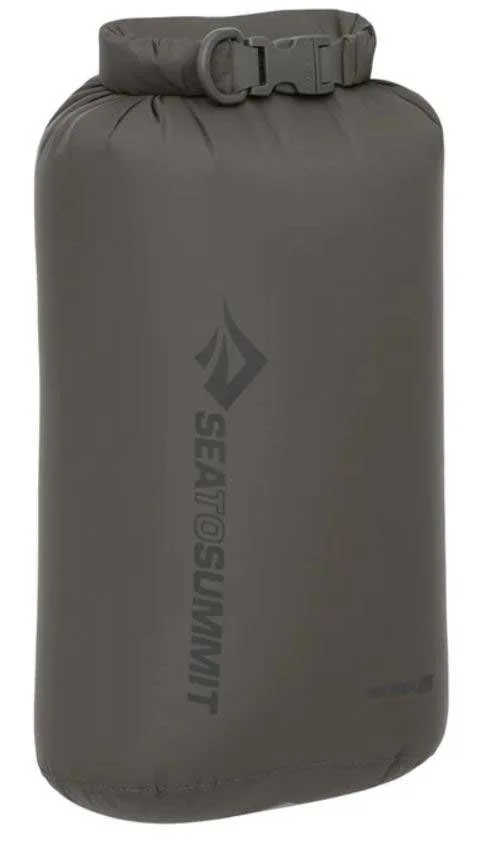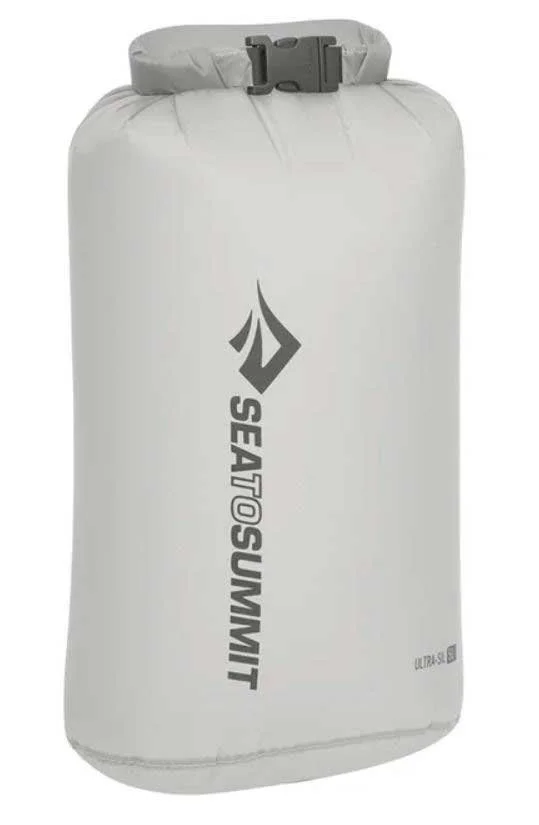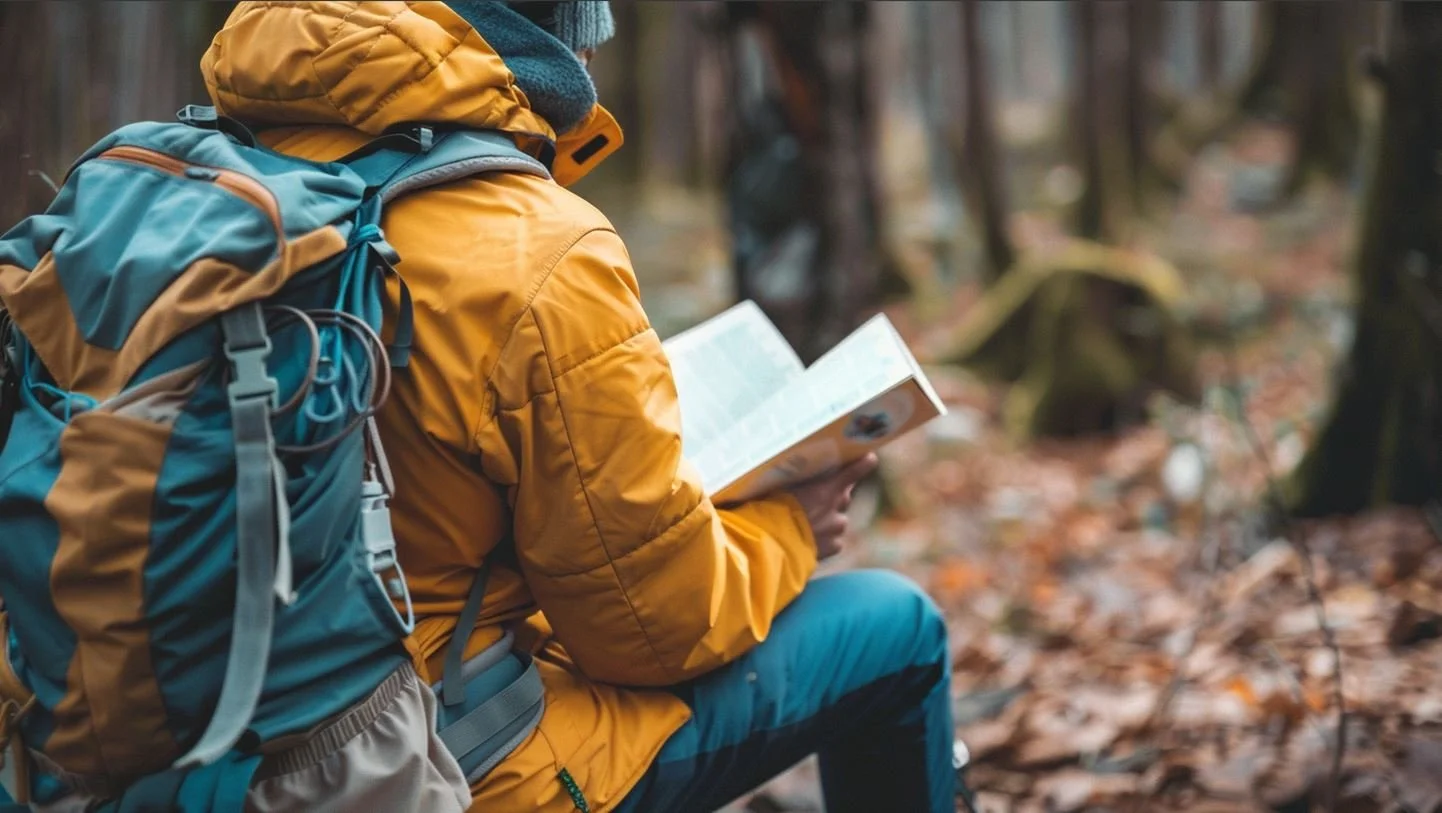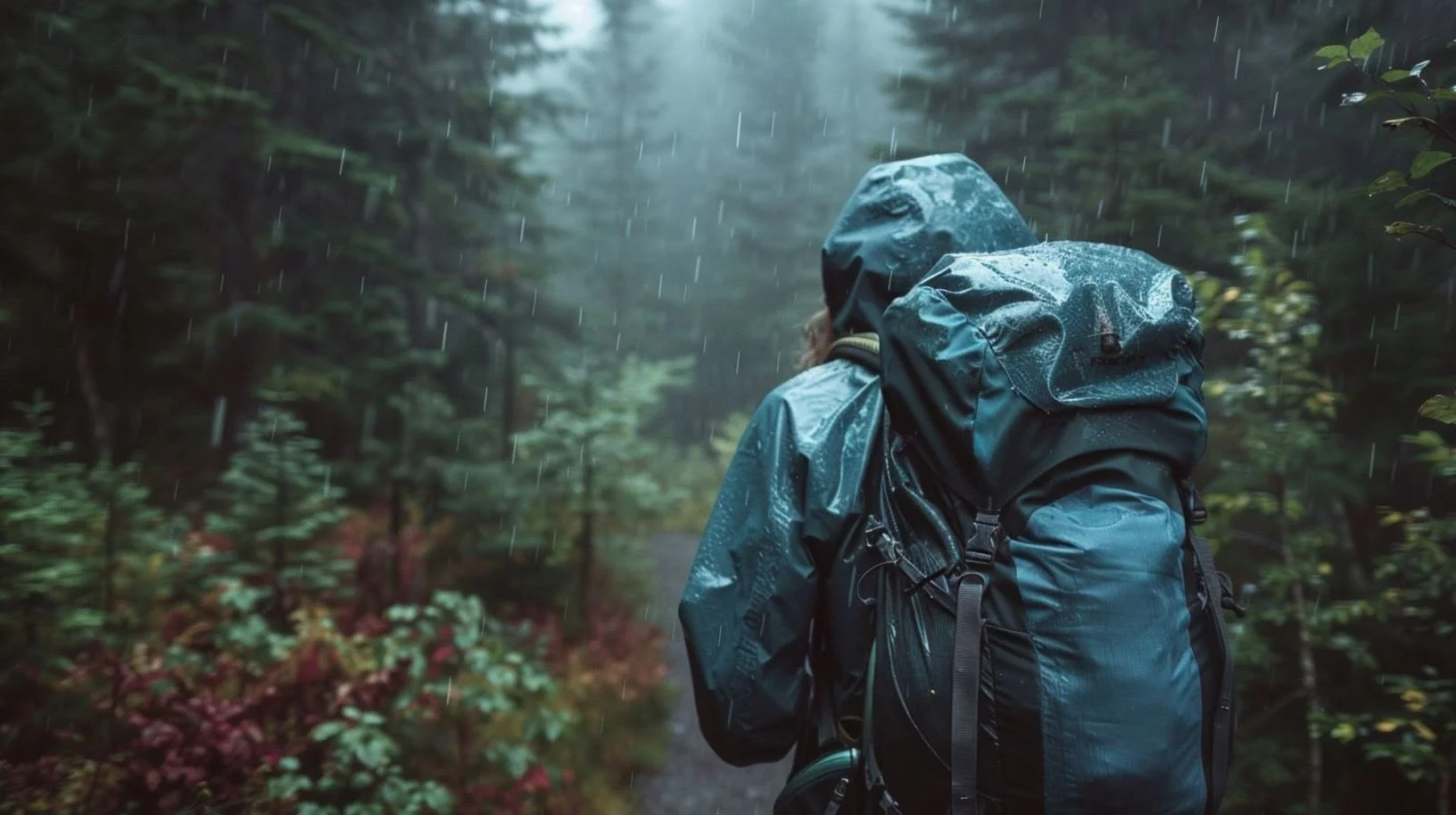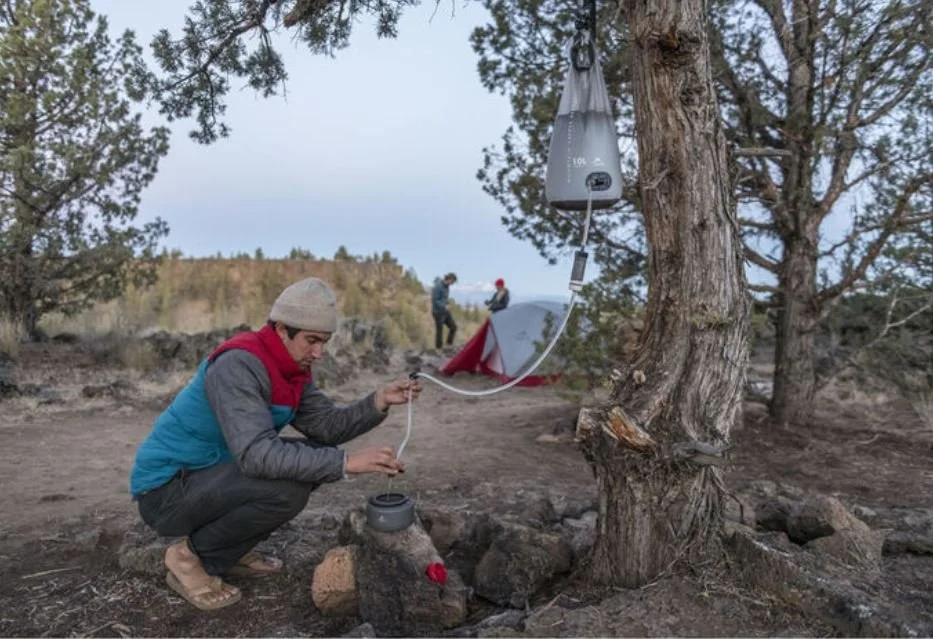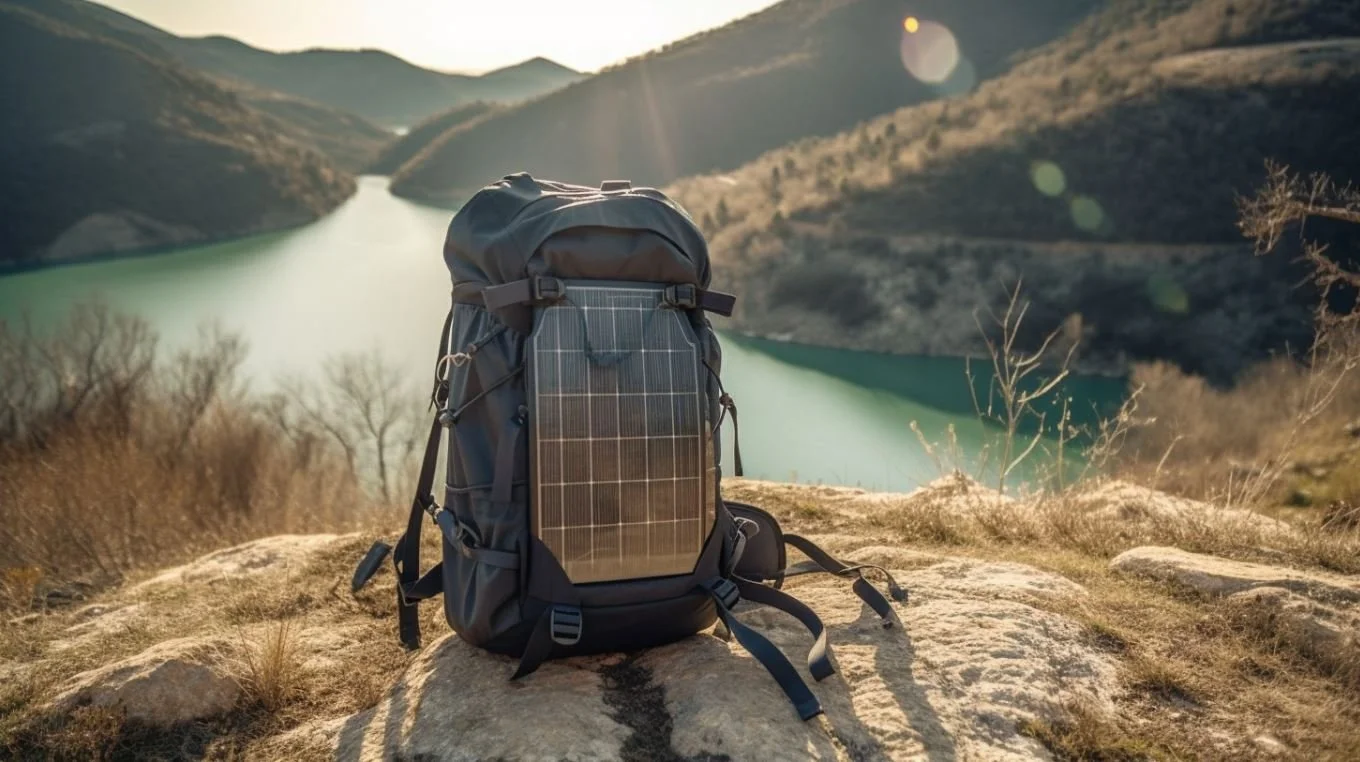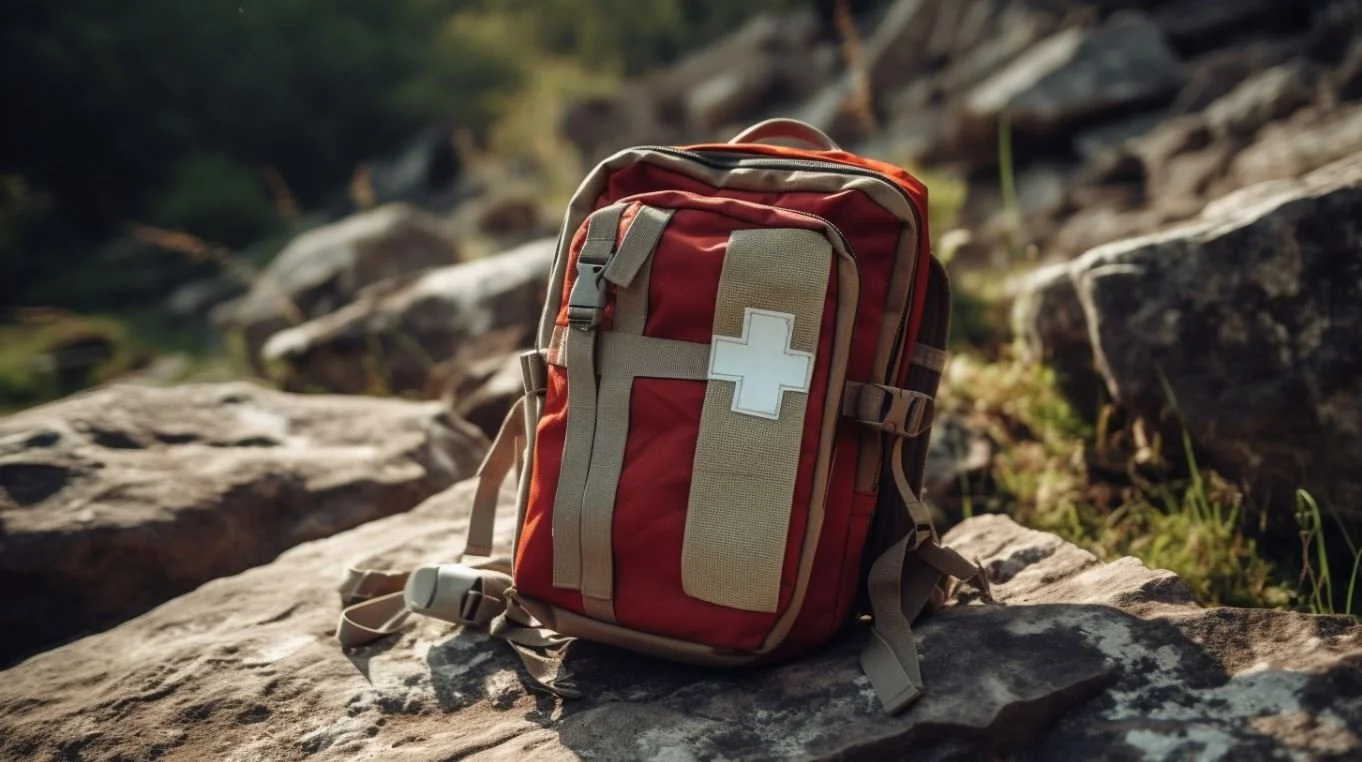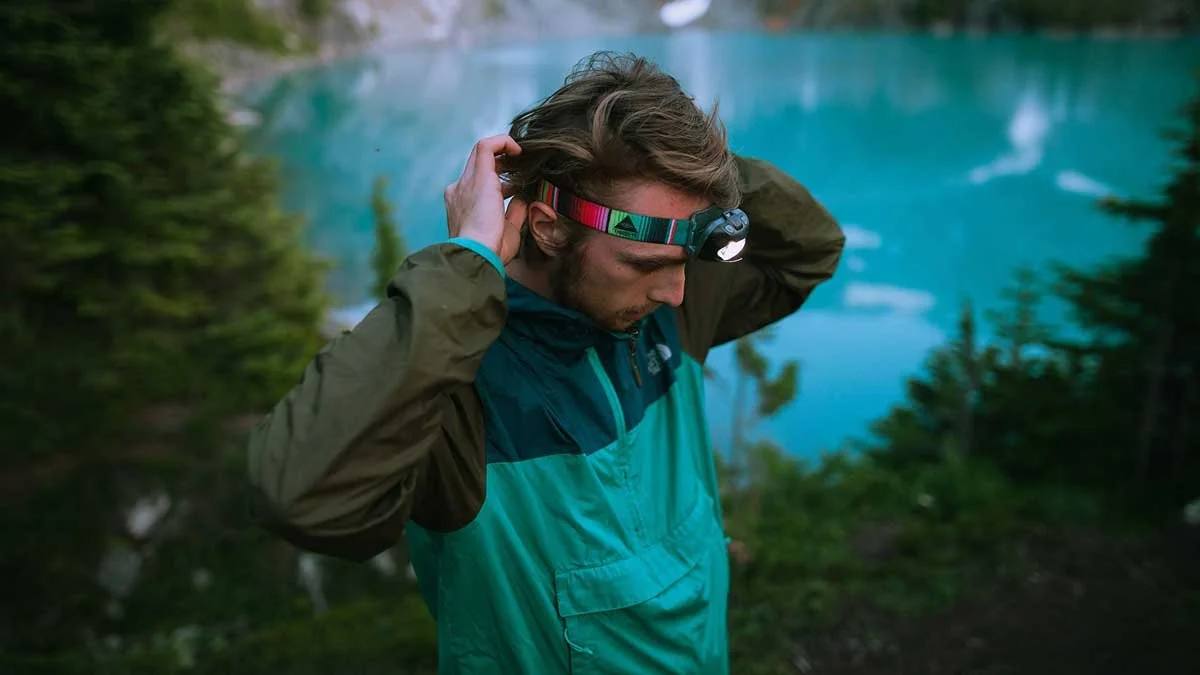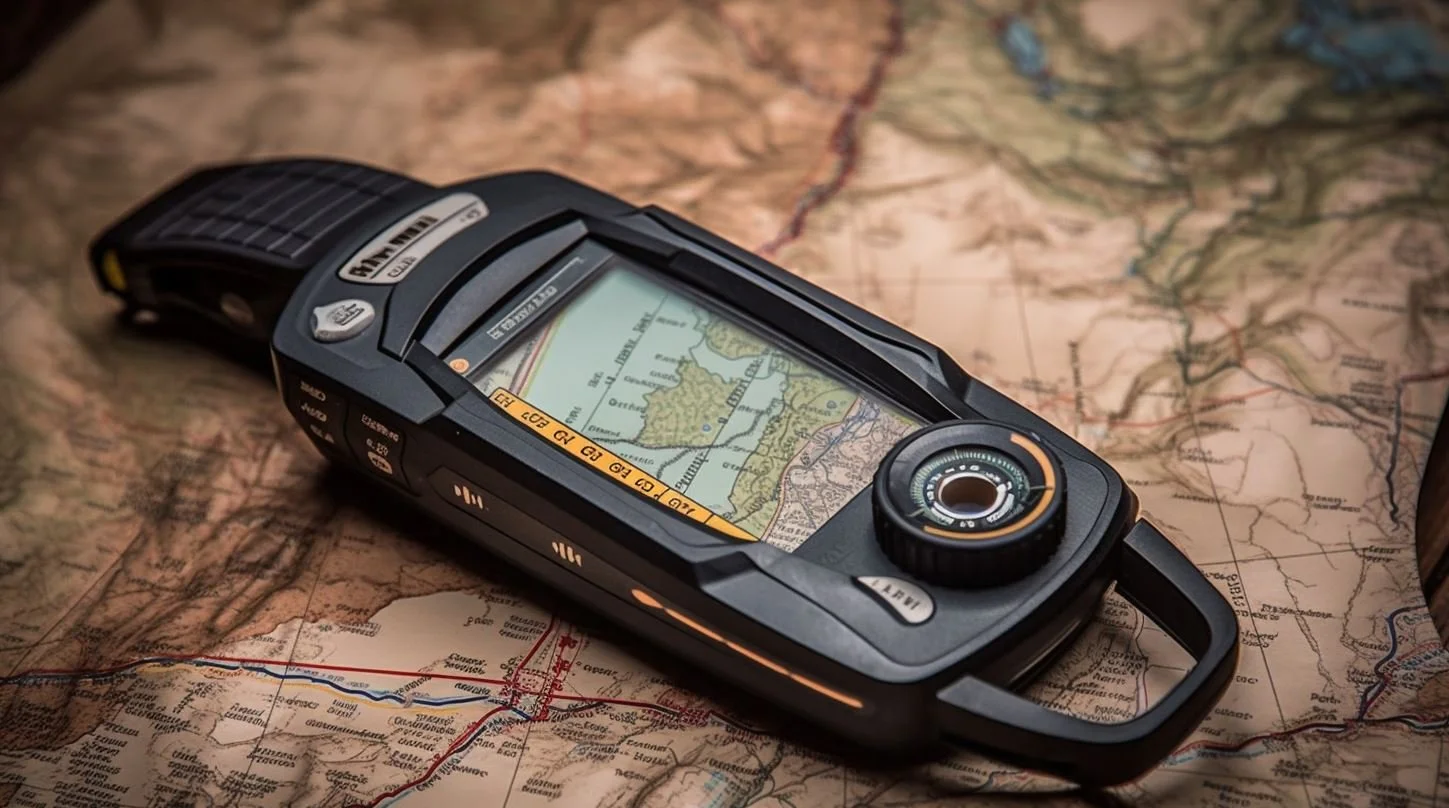Best Dry Bags for Backpacking
Unveiling the lightest waterproof and durable dry bags out there.
Embarking on a backpacking adventure means stepping into the embrace of nature, where the elements are unpredictable and the landscapes, breathtaking.
Among the essential pieces of gear that can make or break your experience, dry bags stand out as critical allies.
These simple yet ingenious items are designed to protect your most valuable possessions from the relentless pursuit of water, ensuring that rain, river crossings, or accidental submersions don't dampen your spirits or your gear.
In the quest for the best dry bags for backpacking, it's crucial to navigate the myriad options with an informed eye, understanding the nuances that distinguish the good from the great.
This comprehensive article delves deep into the world of dry bags, offering detailed reviews of top contenders that have proven their mettle in the field.
Whether you're an ultralight enthusiast aiming to shave ounces off your pack weight or a rugged adventurer seeking gear that can withstand the rigors of the wild, our evaluations are tailored to help you find the perfect match for your needs.
Disclaimer: This post contains affiliate links. If you buy something through them, we may earn a commission at no extra cost to you. Thanks for your support!
Quick Picks:
Most Durable: Sea To Summit Lightweight Dry Bag
Best for Clothes/Sleep Items: Sea to Summit 30D Ultra-Sil Dry Bag
Best for Food: Ultralight Zippered Bear Bag by UltraliteSacks
Lightest & Largest: Nylofume Pack Liner Bags
Comparison:
| Product | Size | Weight | Weight/L | Material | Closure Type |
|---|---|---|---|---|---|
| Sea To Summit Lightweight | 8L | 2.4 oz | 0.3 oz | 70D Nylon | Roll-top |
| Sea to Summit Ultra-Sil | 8L | 1.1 oz | 0.14 oz | 30D Nylon | Roll-top |
| Ultralight Zippered Bear Bag | 9.2L | 1.4 oz | 0.15 oz | TX70 Ultra | Zipper & Roll-Top |
| Nylofume Pack Liner Bags | 52L | 0.9 oz | 0.017 oz | Nylon Polymer | None (Tie Shut) |
Most Durable
Sea To Summit Lightweight Dry Bag
A good compromise between lightweight and durability with 70D nylon construction. Best for storing hard-sided objects that could puncture thinner dry bags.
Sizes: 1.5L - 35L
Weight: 2.4 oz (8L bag)
Material: 70D Nylon
Closure: Roll-top
Build Quality & Durability
What stands out with this bag is the 70D nylon material. It's tough.
This means if you've got gear that's a bit more rigid or has sharp edges, this bag can handle it without getting punctured. It's a solid option for anyone who's had issues with thinner bags tearing in the past.
Available in sizes from 1.5L to 35L, all options come with sealed seams and a reliable roll-top closure, ensuring your stuff stays dry.
Weight & Packability
Despite its durability, the bag doesn't weigh you down. The smallest is barely over an ounce, and the largest is just over 4 ounces.
Waterproofing & Closure System
The waterproofing is straightforward and effective. Roll the top a few times, clip it, and everything inside stays dry. It's an easy-to-use system that's proven to work, whether you're facing rain or splashes from a kayak paddle.
Features & Usability
Some thoughtful features include a white interior that makes it easier to spot your items and an oval base to prevent the bag from rolling on uneven ground. The D-ring at the buckle is handy for attaching the bag to pretty much anything, adding to its versatility.
Overall
If you're after a dry bag that can take a bit of a beating and not let you down, the Sea To Summit Lightweight Dry Bag is a solid choice.
Its 70D nylon construction offers the extra durability you need for carrying items with hard sides or odd shapes without adding much weight to your pack. While it's straightforward in design, it ticks all the boxes for keeping your gear dry and safe.
With a range of sizes and a lifetime warranty, it's a reliable piece of kit for any outdoor adventure.
Best for Clothes + Sleep Items
Sea to Summit 30D Ultra-Sil Dry Bag
30D construction is ultralight but not very durable. This bag is best for stuffing with soft items such as clothing, your sleeping bag and pillow.
Sizes: 1L - 35L
Weight: 1.1 oz (8L bag)
Material: 30D Nylon
Closure: Roll-top
Build Quality & Material
The 30D nylon construction with a siliconized Cordura coating makes the Ultra-Sil Dry Sack incredibly light and waterproof.
The bag comes in various sizes from 1L to 35L, accommodating everything from a few essentials to a larger load like clothing or a sleeping bag.
While the material is quite durable for its weight, it's clear that this bag isn't cut out for rougher treatment.
Hard, sharp, or bulky items are a no-go, as they might puncture or tear the fabric.
Also, you'd want to keep it away from abrasive surfaces to avoid damage.
Waterproofing & Closure
With fully taped seams and a non-wicking Hypalon roll-top closure, the Ultra-Sil Dry Sack does a solid job of keeping water out.
The closure system includes stiffeners at the top, which help create a better seal.
This bag is definitely waterproof for situations like rain or splashes but isn't meant to be submerged.
It's perfect for those wet days on the trail when you need to ensure your sleeping bag, clothes, or other soft items stay dry.
Features & Usability
A few features make the Ultra-Sil stand out. The semi-translucent fabric is not just for looks; it allows you to quickly see what's inside without having to unpack everything.
The oval base design is smart, too, preventing the bag from rolling away when you set it down on slopes.
Plus, the fabric's slippery finish means it slides into your backpack with ease, making packing and unpacking a breeze.
Overall
The Sea To Summit Ultra-Sil Dry Sack is a good choice for backpackers looking to minimize pack weight without compromising on keeping their gear dry.
It's especially suited for softer, lighter items that need protection from the elements. Just remember its limitations regarding durability with hard or sharp objects and avoid rough treatment.
Given its lightweight nature, ease of packing, and waterproof capabilities, it's an excellent tool for organizing your gear inside your backpack.
Plus, with a lifetime warranty, it's a purchase you can feel confident about. Just use it as intended, and it should serve you well on many adventures.
Best for Food
Ultralight Zippered Bear Bag by UltraliteSacks
These bags offer a lot of space for their weight, providing several days' worth of food storage for just a few ounces. They come with convenient features like a zipper for easy access, a partially see-through design to quickly locate items, and a roll-top for compressing the bag as its contents diminish.
Sizes: 9.2L (regular) or 28L (large)
Weight: 1.4 oz (regular size)
Material: TX70 Ultra
Closure: Zipper & Roll-top
Capacity and Weight
The regular size is meant to carry about 2-4 days' worth of food, perfect for solo hikers or couples on weekend jaunts. At a featherlight 1.4oz, it's impressively unnoticeable in your pack. There's a larger option too, for longer trips or bigger groups, still keeping things light at 2.4oz.
Design and Functionality
The top zipper is a standout, offering easy access to your stash without the hassle. The partial see-through design cuts down on rummaging time.
A particularly clever feature is the roll-top compression. As your food supply dwindles, you can roll the bag down, compressing it to save precious space in your pack.
This adaptability in size is a huge plus as it helps maintain a compact load throughout your trip.
Material and Build
The shift to UltraTX fabric is a noteworthy update. TX70 Ultra (70d recycled polyester ripstop face, 45° Ultra™ CrossPly yarn cross pattern yarn sandwiched between, 0.25 mil PET film backing) is slightly heavier but more abrasion resistant compared to Dyneema.
The bag's construction includes features like a waterproof YKK zipper and durable webbing, making it sturdy enough for the light abrasion it might encounter in typical use.
Water Resistance
While the bag does a good job keeping contents dry under a drizzle or splash, it's not fully waterproof. For heavy rain, you'd want to add another layer of protection if any of your food items need to stay dry.
Bear and Odor Proofing
It's crucial to remember that "bear bag" in this context doesn't mean bear-proof. Proper food hanging techniques are still necessary to safeguard your supplies from wildlife. Similarly, the bag isn't designed to be odor-proof, so hang it away from your sleeping area.
Overall
The Ultralight Zippered Bear Bag by UltraliteSacks is a solid pick for backpackers dedicated to lightening their load without skimping on secure food storage.
Its roll-top compression feature, in particular, sets it apart, allowing you to reduce the bag's volume as you consume your food, ensuring your pack stays as compact as possible.
This bag, combined with careful wildlife-proofing practices, can be a game-changer for minimizing pack weight and managing food on the trail.
Lightest Weight & Cheapest
Nylofume® Pack Liner Bags
The lightest, largest, cheapest solution for keeping your entire backpack’s contents dry while backpacking.
Sizes: 52L
Weight: 0.9 oz
Material: Nylon polymer
Closure: None (must tie, twist, or fold shut)
Durability and Waterproofing
First off, the durability of these pack liners is a step up from your average trash bag. They're made from a nylon polymer that's not only tough but also fully waterproof.
This means even if your backpack gets soaked, the contents inside the Nylofume® liner remain dry. It's an essential feature for those long treks where you encounter unpredictable weather.
Weight and Size
Weighing in at just 0.9oz, these liners are incredibly light. They don't add any noticeable weight to your pack, which is a huge plus for anyone looking to cut down on their load.
The size is also a significant advantage. Measuring 20" x 36" when laid flat, they're spacious enough to line a backpack of any size.
And if it's too large, you can easily trim it down to fit smaller packs, making it versatile for different trip lengths and pack sizes.
Odor Resistance
An interesting feature of the Nylofume® Pack Liner is its ability to act as an odor-resistant barrier.
Originally designed to protect food and personal items during home fumigation, these liners help keep your food and clothing safe from animals attracted by smells.
This dual functionality of keeping things dry and odor-contained is a notable benefit for backpackers. Now your backpack won’t smell like dehydrated chili.
Usage and Lifespan
The clear material of the Nylofume® liners allows you to see the contents without unpacking everything.
To seal, you simply fold or roll down the top a few times, then tuck this portion into your pack. You can also secure the bag shut with string or a rubber band.
The recommendation to replace the liner every 1200 miles suggests it has a good lifespan, especially when considering its toughness compared to heavier trash compactor bags, which can develop pinholes over time.
Final Thoughts
The Nylofume® Pack Liner is an impressive solution for backpackers seeking an effective, lightweight, and cost-efficient way to keep their gear dry.
Its durability, combined with the waterproof and odor-resistant qualities, makes it a valuable addition to any backpacking kit.
The fact that it's also the largest option available, yet can be easily customized to fit any pack size, adds to its value.
If you're looking for a reliable pack liner that won't let you down when the weather does, the Nylofume® Pack Liner could be exactly what you need.
Buyer’s Guide
Finding the perfect dry bag for backpacking can be a daunting task, given the plethora of options available on the market.
A dry bag is not just a simple accessory; it's a crucial piece of gear that protects your essentials from the elements, ensuring that items such as clothing, electronics, and sleeping bags remain dry and safe.
This buyer's guide will walk you through everything you need to consider to find the best dry bag for your backpacking adventures.
Understanding Dry Bag Materials
Dry bags come in a variety of materials, each offering different levels of durability, weight, and waterproofing. The most common materials are:
Vinyl: Heavy-duty and durable, ideal for rough use but heavier.
Nylon with Silicone Coating (e.g., Ultra-Sil): Lightweight and strong, with a good balance between weight and durability. It's suitable for lightweight backpacking.
Nylon with PVC Coating: Offers excellent waterproofing and durability, slightly heavier than silicone-coated nylon but great for water-based activities.
-
When selecting the best dry bags for backpacking, one of the key considerations is the material from which the bag is made.
The material dictates not only the durability and weight of the bag but also its waterproof capabilities and overall functionality.
Understanding the nuances of different dry bag materials can help you make an informed decision that aligns with your backpacking needs and preferences.
Here’s an ultimate guide to the materials used in dry bags, focusing on their benefits, drawbacks, and ideal usage scenarios.
Vinyl
Pros:
Durability: Vinyl is incredibly tough and resistant to punctures, abrasions, and tears. It's ideal for rugged use where the bag might be subjected to harsh conditions.
Waterproofing: Offers excellent waterproof capabilities, making it suitable for activities where the bag might be submerged or exposed to persistent, heavy rain.
Cons:
Weight: Compared to other materials, vinyl is heavy. This might be a drawback for backpackers who are trying to minimize their pack weight.
Bulkiness: Vinyl bags tend to be less flexible and more bulky, taking up more space in your backpack.
Ideal For: Activities where durability and waterproofing are paramount, and weight is less of a concern, such as canoeing, kayaking, or when the dry bag is used to contain gear that must stay dry at all costs.
Nylon with Silicone Coating (Ultra-Sil)
Pros:
Weight: Ultra-Sil bags are extremely lightweight, making them perfect for ultralight backpacking where every ounce counts.
Durability: While not as tough as vinyl, silicone-coated nylon offers a good balance of durability and weight, resisting tears and punctures well.
Packability: These bags are highly compressible, allowing them to be packed down small when not in use, saving valuable space in your backpack.
Cons:
Water Pressure Resistance: Under high water pressure, such as during submersion, silicone-coated nylon might not be as waterproof as heavier materials.
Ideal For: Ultralight backpacking and situations where the bag will be exposed to rain and splashes but not necessarily submerged.
Nylon with PVC Coating
Pros:
Waterproofing: Provides excellent waterproofing capabilities, akin to vinyl, suitable for activities where the bag might be submerged.
Durability: Offers a good level of durability, resistant to punctures and abrasions, making it suitable for more demanding conditions.
Cons:
Weight: Heavier than silicone-coated nylon, though generally lighter than vinyl, striking a middle ground between the two.
Flexibility: While more flexible than vinyl, PVC-coated nylon can still be bulkier and stiffer than silicone-coated options.
Ideal For: Backpackers who need a durable, waterproof bag for activities like river crossing, boating, or rainy environments but are still mindful of pack weight.
Choosing the Right Material
When selecting a dry bag for backpacking, consider the following factors:
Activity Type: Are you expecting heavy rain, potential submersion, or just need to protect your gear from moisture?
Weight vs. Durability: Is minimizing pack weight your priority, or do you need a bag that can withstand rough handling and contact with abrasive surfaces?
Packability: Do you need the bag to compress down to a minimal size when not in use?
Understanding the properties of dry bag materials and aligning them with your specific needs will ensure that you choose the best dry bag for your backpacking adventures, balancing protection, weight, and durability.
Size Matters
Dry bags range from small 1L sizes, perfect for valuables and electronics, to larger sizes upwards of 30L, ideal for sleeping bags and clothing. Consider what you'll be packing and choose accordingly. For backpacking, having a range of sizes can be beneficial for organizing and accessing gear easily.
-
Choosing the right size dry bag for backpacking is critical for both organization and efficiency on the trail.
The size of the dry bag you select will determine how much gear you can protect from the elements and how easily you can access and pack your belongings.
Here's the ultimate guide to understanding size considerations for the best dry bags for backpacking, helping you to make an informed choice tailored to your specific needs.
Understanding Dry Bag Sizes
Dry bags come in a wide range of sizes, typically measured in liters (L), which indicate the volume of gear they can hold. Here's a general breakdown of common sizes and their potential uses:
Small (1L to 5L): Perfect for small valuables, electronics, a first-aid kit, or snacks. These bags are ideal for items you need to access quickly or keep on hand throughout the day.
Medium (6L to 20L): Suitable for clothing, small sleeping bags, or day's food supply. A medium-sized bag can be used to separate different types of gear within your pack for better organization and access.
Large (21L to 40L): Designed to hold larger items like bigger sleeping bags, several days' worth of clothing, or a combination of smaller items grouped together. Large bags are excellent for main gear compartments within your backpack.
Extra Large (40L+): Best for when you need to protect the entirety of your backpack's contents, such as during a boat trip or when backpacking in extremely wet conditions. Extra-large bags can also double as a liner for your entire backpack.
Choosing the Right Size
When selecting the size of your dry bag(s), consider the following factors:
Trip Duration: Longer trips require more gear, necessitating larger or multiple dry bags to keep all your essentials dry.
Gear Volume and Type: Bulky items like sleeping bags or insulated jackets require larger bags. Consider compressibility of your gear and whether it needs to be accessed frequently.
Backpack Capacity: The size and number of dry bags should complement the total volume of your backpack. Using several smaller bags can help distribute weight evenly and improve pack organization.
Pack Organization: Smaller bags can be used to categorize items (e.g., clothes in one bag, electronics in another), making it easier to find what you need without unpacking everything.
Versatility and Adaptability
Having a range of dry bag sizes at your disposal can offer flexibility for different situations.
For instance, a small bag can keep your phone and wallet dry during a day hike, while larger bags protect clothing and sleeping gear on overnight trips.
Some backpackers prefer using multiple small to medium bags for organizational purposes, while others opt for a large bag to simplify their setup.
Closure Types
Roll-Top: The most common closure type, offering excellent waterproofing by rolling the top down several times and then clipping it closed.
Zipper Seal: Similar to a zip-lock bag but on a larger scale. These are less common but offer good waterproofing and easy access.
Fold-Top with Buckle: A variation of the roll-top, which folds over and then buckles to create a handle.
-
When it comes to keeping your backpacking gear dry, the closure type of your dry bag plays a crucial role.
It affects the effectiveness of waterproofing and ease of use and accessibility.
Understanding the different closure types available can help you choose the best dry bag for your needs.
Here's the ultimate guide to dry bag closure types for backpacking.
Roll-Top Closure
How It Works: The top of the bag folds over itself several times before being secured with a buckle or clip. This creates an air and water-tight seal, effectively preventing moisture from entering.
Pros:
Highly waterproof, making it ideal for activities where the bag might be exposed to heavy rain or brief submersions.
Adjustable capacity, as you can roll it more or less depending on how full the bag is, allowing for flexible storage.
Generally more durable and reliable since it has fewer parts that can break.
Cons:
Can be slightly more cumbersome to open and close quickly, especially if you need to access your gear frequently.
The rolled top takes up a bit of extra space.
Best For: Situations where waterproofing is paramount, such as river crossings, rainy hikes, or when storing items that absolutely must stay dry.
Zipper Seal
How It Works: Similar to a ziplock bag but on a larger scale, these closures use a plastic zipper to seal the bag shut.
Pros:
Easy and quick to open and close, offering convenient access to your items.
Provides a good seal that’s effective against rain and splashes.
Cons:
Not as waterproof as roll-top closures, especially if submerged or exposed to high water pressure.
Zippers can fail or get damaged more easily than other closure types, potentially compromising the waterproof seal.
Best For: Dry bags that need to be accessed frequently or for less critical items that require protection from light moisture rather than full submersion.
Fold-Top with Buckle
How It Works: Similar to roll-top but instead of rolling, the top of the bag folds over once or twice and is then secured using a buckle that clips together, often creating a handle.
Pros:
Quick and easy to use, providing faster access to gear compared to the roll-top.
Effective at keeping out moisture for general use in damp conditions.
Cons:
Not as secure against water ingress as the roll-top closure, especially in situations where the bag could be submerged.
The seal can be less airtight, potentially allowing moisture in over time or under pressure.
Best For: Everyday use where quick access is more important than absolute waterproofing, such as for storing items you use regularly throughout the day.
Additional Considerations
When choosing a closure type, also consider the overall durability and material of the dry bag, as these factors will influence its waterproofing effectiveness and longevity.
Furthermore, think about how you plan to pack and access your gear. If you’re frequently opening your bag throughout the day, a zipper seal or fold-top might offer the convenience you need.
For critical items that cannot get wet under any circumstances, a roll-top closure provides the best protection.
Features to Look For
Transparency or Semi-Transparency: Helps in quickly identifying contents without having to unpack.
Compression Straps or Rings: Useful for reducing volume and attaching the bag to the outside of a pack.
D-Rings or Attachment Points: Allow for easy attachment to kayaks, canoes, or other gear.
Color Coding: Different colors can help in organizing and quickly locating specific items.
-
When selecting the best dry bag for backpacking, beyond material, size, and closure type, there are several additional features to consider.
These features can significantly enhance the bag's functionality, ease of use, and suitability for your specific needs.
Here’s the ultimate guide to the key features to look for in a dry bag for backpacking, ensuring you choose a product that’s as versatile and reliable as it is protective.
1. Transparency or Semi-Transparency
Being able to see the contents of your dry bag without opening it is a huge time-saver. It allows for quick identification of items, making it easier to grab what you need without rummaging through several bags. Look for bags that are either fully transparent or offer a semi-transparent window.
2. Compression Capabilities
Some dry bags come with external straps or an integrated compression system, allowing you to reduce their volume as the contents are used or to compact the bag for easier packing. This feature is particularly useful for optimizing space within your backpack and for managing bulky items like sleeping bags and clothing.
3. Attachment Points and D-Rings
For backpackers who want to attach their dry bag to the outside of their pack, kayak, or anywhere else, attachment points and D-rings are invaluable. They offer flexibility in how you carry and secure your bag, ensuring it’s always within reach or securely fastened during challenging segments of your adventure.
4. Color Coding
If you’re carrying multiple dry bags, color coding can help you organize and quickly locate specific items. Opting for bags in different colors or with color-coded features (like straps or closures) can streamline your packing system and save time during your trip.
5. Durability Features
Look for dry bags with reinforced seams, abrasion-resistant coatings, and sturdy closure systems. These durability features ensure that your dry bag can withstand rough treatment, contact with abrasive surfaces, and prolonged use without failing.
6. Air Purge Valve
Some dry bags include an air purge valve, which allows you to squeeze out excess air from the bag before sealing it. This not only makes the bag more compact but also helps in achieving better compression and waterproofing by minimizing the bag's internal volume.
7. Internal Organization
While simpler dry bags are just empty sacks, some models come with internal pockets or dividers. These can be incredibly helpful for organizing smaller items, preventing them from getting lost among larger gear, and providing extra protection for sensitive items like electronics.
8. Ease of Cleaning
Backpacking can get your gear dirty, so opting for a dry bag that’s easy to clean is a smart move. Some materials and designs are easier to wipe down or even machine wash, helping you maintain hygiene and extend the life of your bag.
9. Eco-Friendly Materials
For environmentally conscious backpackers, selecting a dry bag made from sustainable or eco-friendly materials can be a priority. Look for bags made from recycled materials, produced with low environmental impact processes, or designed to be highly durable to reduce waste.
Durability and Weight
For backpacking, the balance between durability and weight is crucial. Lightweight materials such as Ultra-Sil offer good protection without weighing down your pack, but if you're traversing through rough terrain, a slightly heavier, more durable bag might be necessary.
-
In the world of backpacking, where every ounce matters and gear is pushed to its limits, finding the right balance between durability and weight in a dry bag is crucial.
The best dry bag for your adventure needs to withstand the rigors of the outdoors without weighing you down.
Here’s the ultimate guide to navigating the trade-offs between durability and weight when choosing a dry bag for backpacking.
Understanding Durability in Dry Bags
Durability in dry bags is determined by several factors, including the material's thickness (measured in deniers), construction quality, and resistance to abrasion, puncture, and UV damage.
A highly durable dry bag can protect your gear from rough terrain, sharp objects, and prolonged exposure to harsh weather conditions.
Key Durability Features:
Material Thickness: Thicker materials offer better protection against abrasions and punctures. However, they also add weight.
Reinforced Seams: Seams are potential weak points where water can seep in. Look for welded or taped seams for enhanced durability and waterproofing.
Abrasion-Resistant Coatings: Some dry bags feature coatings that resist wear and tear, extending the bag's lifespan.
Balancing Durability with Weight
When backpacking, carrying unnecessary weight can hinder your mobility and enjoyment. The challenge lies in choosing a dry bag that offers sufficient durability while being light enough not to burden your pack.
Lightweight Materials:
Ultra-Sil Nylon: A siliconized nylon material that provides a good balance between durability and weight, suitable for light to moderate conditions.
Dyneema® Composite Fabric (DCF): Exceptionally strong and lightweight, ideal for ultralight backpacking, though it comes at a higher cost.
Making the Right Choice for Your Trip
The right balance between durability and weight depends on the nature of your backpacking trips.
For Harsh Conditions: If you’re venturing into rugged terrain or expect to encounter severe weather, prioritize durability. Look for dry bags made from heavier materials with added durability features like reinforced seams and abrasion-resistant coatings.
For Ultralight Backpacking: If minimizing pack weight is your primary concern, and you're traveling through less demanding environments, opt for lighter materials such as Ultra-Sil Nylon or DCF. Be mindful of the trade-off in terms of direct durability against abrasion and puncture resistance.
Considerations for Durability and Weight
Packability: Durable dry bags made from heavier materials may be less packable. Consider how the bag will fit with the rest of your gear.
Waterproof vs. Water-Resistant: Ensure the bag’s material and construction are fully waterproof, not just water-resistant, especially if you anticipate heavy rain or submersion.
Care and Repair: Lightweight materials may require more careful handling and maintenance. Some dry bags come with repair kits for patching small holes or tears.
Waterproof vs. Water-Resistant
Ensure that the bag is fully waterproof, not just water-resistant, if you need to protect sensitive items. Water-resistant bags can handle light rain and splashes but might not withstand being submerged or exposed to heavy, prolonged rain.
-
In outdoor adventures, particularly backpacking, the distinction between waterproof and water-resistant gear can be the difference between a comfortable journey and a potentially ruined experience.
Understanding this distinction is crucial when selecting dry bags, as the choice impacts how well your gear is protected from the elements.
Here's the ultimate guide to navigating the "waterproof vs. water-resistant" debate for dry bags, ensuring you make the best choice for your backpacking needs.
Waterproof Dry Bags
Definition: Waterproof dry bags are designed to provide complete protection against water entry, even when submerged or exposed to persistent, heavy rain. These bags are typically made from materials that do not allow water to pass through and feature sealed seams and closures that prevent water ingress.
Key Features:
Material: Made from high-density materials such as PVC, TPU, or nylon with waterproof coatings.
Construction: Employ welded or taped seams to ensure no water can seep through stitch holes.
Closure: Utilize roll-top closures, often with additional sealing mechanisms like buckles or waterproof zippers, to create an airtight seal.
Ideal For:
Activities where bags may be submerged, such as river crossings, canoeing, or kayaking.
Environments with heavy rainfall where gear must stay completely dry.
Protecting sensitive items like electronics, sleeping bags, or clothing.
Water-Resistant Dry Bags
Definition: Water-resistant dry bags offer protection against light moisture, such as rain or splashes, but are not designed to withstand submersion or heavy, prolonged exposure to water. These bags can repel water to some degree but will eventually allow water to penetrate, especially at the seams or closures.
Key Features:
Material: Typically made from lighter materials like ripstop nylon, which may have a water-repellent coating.
Construction: May feature stitched seams, which are not fully sealed, making them vulnerable to water if exposed for extended periods.
Closure: Often use drawstrings, standard zippers, or fold-over tops without the same sealing capabilities as their waterproof counterparts.
Ideal For:
Light rain and moisture conditions where the risk of submersion is minimal.
Organizing gear within a larger, waterproof bag or container.
Situations where breathability is a priority, such as storing damp clothing or gear that needs to dry out.
Choosing Between Waterproof and Water-Resistant
Consider Your Environment: Assess the typical weather conditions and water exposure you expect to encounter. Waterproof bags are essential for wet environments, while water-resistant bags might suffice in drier climates with occasional rain.
Assess Your Gear Needs: Determine which items absolutely cannot get wet and may require waterproof protection (e.g., electronics, down sleeping bags) versus items that can tolerate some moisture.
Weight and Packability: Waterproof bags are generally heavier and less packable than water-resistant options. Consider the trade-off between the level of protection and the additional weight and bulk in your pack.
Versatility: Some backpackers opt for a combination of both types, using waterproof bags for critical items and water-resistant bags for less sensitive gear, balancing protection with overall pack weight and space.
Top Recommendations:
| Product | Size | Weight | Weight/L | Material | Closure Type |
|---|---|---|---|---|---|
| Sea To Summit Lightweight Dry Bag | 8L | 2.4 oz | 0.3 oz | 70D Nylon | Roll-top |
| Sea to Summit 30D Ultra-Sil Dry Bag | 8L | 1.1 oz | 0.14 oz | 30D Nylon | Roll-top |
| Ultralight Zippered Bear Bag by UltraliteSacks | 9.2L | 1.4 oz | 0.15 oz | TX70 Ultra | Zipper & Roll-Top |
| Nylofume Pack Liner Bags | 52L | 0.9 oz | 0.017 oz | Nylon Polymer | None (Tie Shut) |
FAQ
-
Yes, dry bags are excellent for backpacking.
They provide essential protection for your gear, keeping it dry and safe from rain, river crossings, accidental submersions, and even humidity.
Dry bags also help organize your backpack, making it easier to access what you need without unpacking everything.
Whether you're dealing with unpredictable weather or crossing through varied terrains, a dry bag is a valuable asset for any backpacker.
-
The best material for a dry bag depends on your needs for durability and weight.
For ultralight backpacking, where every ounce matters, materials like Ultra-Sil nylon (a silicone-coated nylon) offer a great balance between strength and lightweight.
For more rugged use, where abrasion and puncture resistance are crucial, heavier materials like vinyl or nylon with a PVC coating are preferable.
Ultimately, the best material is one that aligns with your specific requirements for weight, durability, and waterproofing.
-
In a dry bag for backpacking, you typically put items that need to stay dry at all costs.
This includes electronic devices (such as phones, cameras, GPS units), clothing (especially layers for warmth), sleeping bags, down jackets, and any other items that would be compromised if wet.
Additionally, sensitive documents, maps, and food that needs to stay dry should also be packed in a dry bag.
Essentially, anything that moisture could ruin or that would be uncomfortable or unsafe if wet should be secured in a dry bag.
-
The size of the dry bag needed for backpacking food depends on the length of your trip and the amount of food you plan to carry.
For a short, 2-4 day trip, a 10-20 liter dry bag should suffice for one to two people's food.
For longer trips or if you're carrying food for more people, you might need a larger bag, around 20-30 liters.
It's also worth considering using multiple smaller bags to organize food by meal or day, making it easier to manage and access what you need without unpacking everything.
Keep in mind, the goal is to have enough space to not only accommodate all your food but also to allow for the bag to be sealed properly to ensure waterproofness.
Conclusion
The diversity of dry bags available on the market is a testament to the varied adventures that beckon us outdoors.
Whether your expeditions lead you through the misty trails of ancient forests, across the unpredictable currents of wild rivers, or into the heart of torrential downpours, there's a dry bag built to protect your essentials every step of the way.
The key lies in understanding your own needs—balancing durability with weight, deciphering the nuances between waterproof and water-resistant, and choosing a size and closure type that matches your adventure.
Remember, the best dry bag is not merely an accessory but a vital piece of gear that safeguards your journey's essentials, ensuring that the stories you bring back are filled with the joy of exploration, not the woes of wet gear.
As you prepare for your next backpacking adventure, armed with the knowledge from this guide, consider your dry bag choice an investment not just in your gear's longevity but in the quality of your outdoor experiences.
Thanks for reading.


